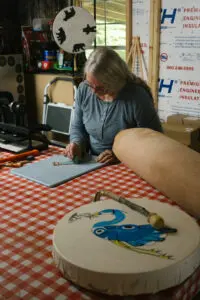
An accomplished artist, Pat’s hand-cut, wet-formed and then waxed leatherwork is featured at a local gallery.
Pat Thorp was reading on the couch with her dog curled up beside her, waiting for her husband to come home. It was just another peaceful day on their beautiful 20-acre property on the Olympic Peninsula, five minutes from the beach and 45 minutes from Aberdeen.
She heard the sound of tires on gravel — her husband, arriving sooner than expected — and stood up to welcome him. But she felt strange. The left side of her body suddenly went numb, and she began to collapse just as he opened the door. She managed to get out the words, “Help me… stroke…” and her husband rushed to call the paramedics.
Pat was right — she was experiencing a stroke, the kind of medical emergency where every minute counts. As soon as she arrived at her local hospital, doctors immediately contacted the UW Medicine Comprehensive Stroke Center at Harborview. Part of the UW Medicine Neurosciences Institute (NSI), the Center offers 24/7 telestroke care and referrals for Washington, Wyoming, Alaska, Montana and Idaho.
She vividly remembers a UW Medicine stroke provider talking with clinical staff and her husband on a video screen. The provider recommended the administration of tenecteplase, a clot-busting drug, and helicopter transport to Harborview, where she could receive the lifesaving care she needed.
Strokes happen when blood flow to the brain stops because of a narrowed blood vessel, bleeding or a clot. Any interruption in oxygen that the brain needs to function can cause permanent brain damage or even death.
Fortunately, patients can count on the NSI, which provides care for more than 500 conditions that affect the brain, spine and nervous system — including strokes. It’s unique in the region because it integrates neurology, neurosurgery, endovascular, neurocritical care and inpatient and outpatient rehabilitation services.
But the NSI didn’t just save Pat’s life — it helped her get back to the activities that she loves.
Pat and her husband have spent years working to create their wooded, rural sanctuary, which is completely off the grid with solar power and rainwater collection systems. They have a couple of trailers, a cabin, a big shop and a 22-foot tepee on the property, plus a garden and orchard. An accomplished artist, Pat’s hand-cut, wet-formed and then waxed leatherwork is featured at a local gallery, and she also raises Catahoula leopard dogs.
It’s a lifestyle that requires a lot of physical activity. And when she was partially paralyzed by the stroke, Pat was terrified she wouldn’t be able to continue living in such a remote area.
“I just felt trapped in my body because I had no feeling at all on my left side — I couldn’t move my fingers or my toes, and I couldn’t really communicate,” says Pat. “And I was already worried about whether I could recover.”
The first encouraging sign was that after she received tenecteplase, she was able to move her foot. An expert neurosurgeon at Harborview, Michael Levitt, MD, found a calcified blockage and explained that the best road to a full recovery was for him to place a stent to open up the narrowed artery. This would restore her blood flow.
Pat worried that if she was put under anesthesia, she might not wake up. Levitt assured her that she could stay awake during the procedure and that she’d be just fine.
“That meant a lot to me because, at that point, I really needed to hear that I had some control,” Pat says. “The thing that was the most helpful to me was that my providers would just sit and listen when I got scared.”
The procedure was a success — and thanks to the stroke team’s expertise and Pat’s determination to get her life back, she feels stronger than she did before. She believes that episodes of weakness before the stroke that she’d attributed to aging might actually have been caused by the blockage.
“I feel really lucky,” says Pat. “If my husband had come home later, or the stroke provider hadn’t been available remotely, or the helicopter hadn’t made it to Harborview in record time, I probably wouldn’t be here.”
From patient to advocate
Everyone’s lost their voice at some point or another, so when Guadalupe Petrone, an immigration and mobility manager at an actuarial firm in Seattle, found herself starting to lose hers during a presentation, she thought she’d get a glass of water and be fine. But her voice didn’t come back.
Thinking it was a virus, she went to the doctor, who ordered a scan of her neck and head. It turned out that she wasn’t sick with the flu or laryngitis — it was an unruptured aneurysm in her brain. Left untreated, it could cause a life-threatening subarachnoid hemorrhagic stroke.
It was hard for Guadalupe to comprehend since her symptoms didn’t seem that bad. The doctor told her she needed to seek further treatment, but she wasn’t persuaded. Not until she got a call from Louis Kim, MD, chief of neurological surgery at Harborview and director of the UW Medicine Brain Aneurysm Center, was she convinced of the seriousness of her condition.
Fortunately, the team at Harborview has the surgical expertise — and technology — to treat aneurysms. As Levitt notes, “All causes of stroke, including rarer diseases like brain aneurysms, benefit from the multidisciplinary, world-class expertise of the NSI.”
Guadalupe hoped the aneurysm would be a simple one and easy to resolve. Instead, her scan revealed a complex aneurysm that, she says, “looked like a bag of oranges.” Kim broke the news that it would require a craniotomy, meaning he’d have to remove part of the bone from her skull to expose the brain for surgery.
Guadalupe was stunned. To make things even more complicated, COVID-19 was running rampant. Could she take off enough time from work for the recovery? Would she be able to afford the cost? Kim and patient care coordinator Shelby Goettle helped ease her concerns.
Her surgery went extremely well, and while she had a few symptoms afterward (trouble hearing in one ear and, for a few nights, difficulty forming words in English as opposed to Spanish), they soon cleared.
“Dr. Kim was fantastic — everyone on his team was incredibly caring,” says Guadalupe. “I tell my friends if you have to have neurosurgery, then come to Harborview because there’s the best neurosurgeon here.”
Later, Guadalupe discovered that two of her relatives had died as a result of strokes, and she now shares the warning signs and advocates that people go in for care if they experience symptoms.
“I tell them not to wait, to get it checked out,” says Guadalupe. “And if they feel like they’re getting a stroke, go immediately.”

